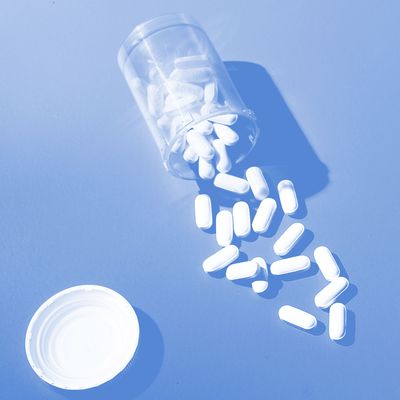
You may not be familiar with the term benzodiazepines, or benzos for short, but you’re probably familiar with the drugs that fall under this class of pharmaceuticals. Benzos include Valium, Xanax, and other prescription medications that are extremely common and, for some people, integral to combating anxiety, mood disorders, and insomnia. In fact, one in 20 Americans has a prescription to a benzodiazepine.
But benzos have a dark side, too: For years, researchers have understood that they can be highly addictive and therefore carry a significant risk of overdose, especially when they are combined with opiates or alcohol. Now a new study in the American Journal of Public Health offers some stark numbers suggesting that the skyrocketing rate at which benzos are prescribed has indeed brought with it an increase in overdose deaths.
Using data from the Medical Expenditure Panel Survey (which details how much people are spending on prescription drugs) and the CDC’s multiple-cause-of-death data, a team of researchers from the Albert Einstein College of Medicine and the Perelman School of Medicine at the University of Pennsylvania found that prescriptions for benzos tripled between 1996 and 2013, but the rate of overdoses has quadrupled in that same time period (though it has held steady since 2010).
What’s even more disconcerting is the fact that researchers aren’t exactly sure why this is happening. It could be that people with legitimate prescriptions are using the drugs in a risky manner, that more pills from legitimate prescriptions mean more getting into the hands of people using the drugs illegitimately, or — perhaps most likely — both. Dr. Joanna Starrels, a co-author of the study, mentioned the second possibility in the study’s press release. “People at high risk for fatal overdose may be obtaining diverted benzodiazepines (i.e., not from medical providers), and we know that combining benzodiazepines with alcohol or drugs — including opioid painkillers — can lead to fatal overdoses,” she said.
One interesting question is how these findings fit into results reported late last year by Drs. Anne Case and Angus Deaton, the husband-and-wife team of Princeton economists who found alarming trends in America’s withe, middle-aged death rate over the last decade and a half — trends that were driven in part, they write, by drug overdoses. Dr. Marcus Bachhuber, of Albert Einstein College of Medicine in the Bronx and one of the authors of the most recent benzodiazepine study, says the data suggest that what her team found and what Case and Deaton found are linked. “I certainly think there is a connection,” Bachhuber said via email. “In supplemental analyses, we examined overdose deaths by age, gender, and race and found that middle-aged white people have been the hardest hit by these types of overdoses.”
It’s not an easy problem to tackle, but co-author Sean Hennessy suggested in the press release that there is one straightforward partial solution. “This epidemic is almost entirely preventable, as the most common reason to use benzodiazepines is anxiety — which can be treated effectively and much more safely with talk therapy,” he said. “Given the high prevalence of anxiety symptoms, we need a more constructive approach to the problem than popping pills.”




